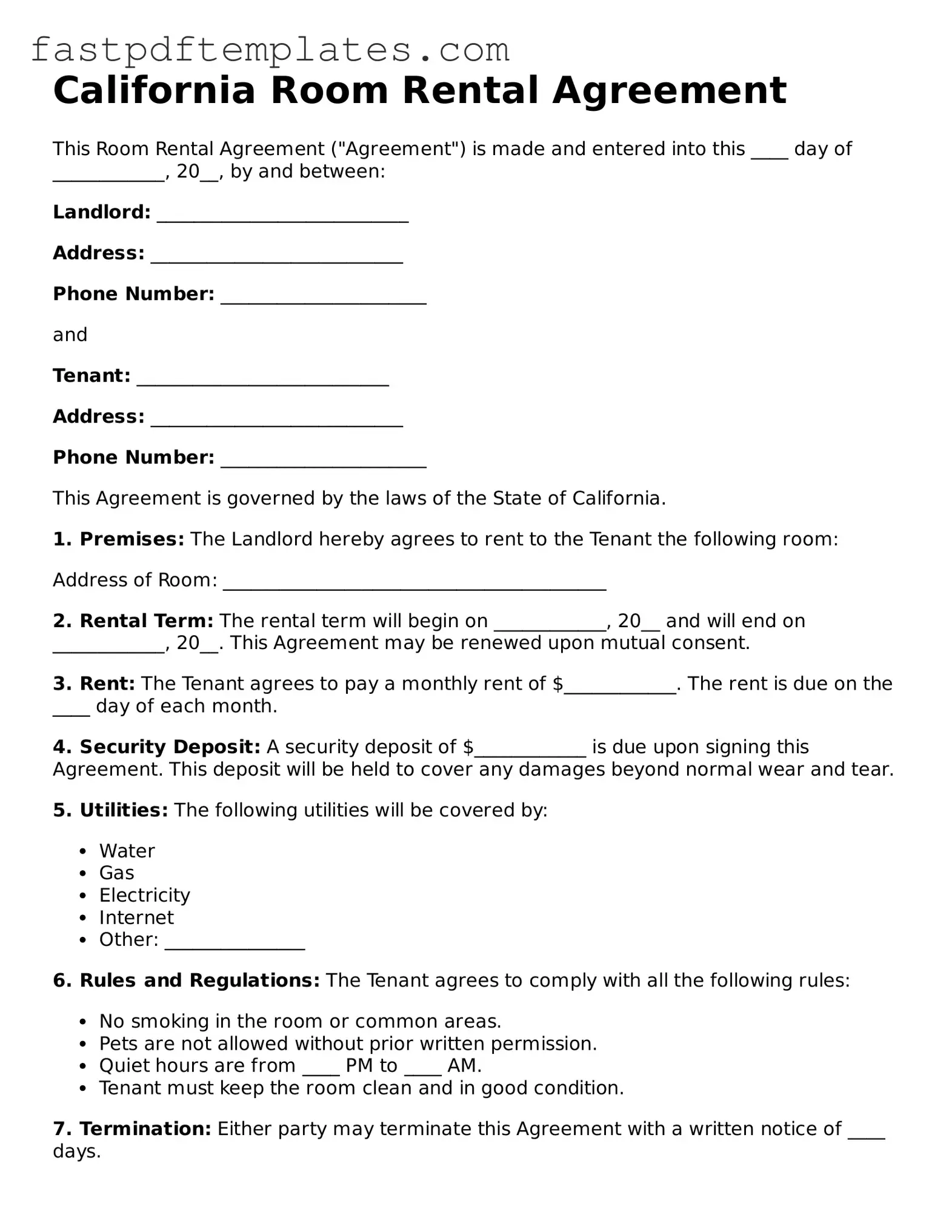California Room Rental Agreement
This Room Rental Agreement ("Agreement") is made and entered into this ____ day of ____________, 20__, by and between:
Landlord: ___________________________
Address: ___________________________
Phone Number: ______________________
and
Tenant: ___________________________
Address: ___________________________
Phone Number: ______________________
This Agreement is governed by the laws of the State of California.
1. Premises: The Landlord hereby agrees to rent to the Tenant the following room:
Address of Room: _________________________________________
2. Rental Term: The rental term will begin on ____________, 20__ and will end on ____________, 20__. This Agreement may be renewed upon mutual consent.
3. Rent: The Tenant agrees to pay a monthly rent of $____________. The rent is due on the ____ day of each month.
4. Security Deposit: A security deposit of $____________ is due upon signing this Agreement. This deposit will be held to cover any damages beyond normal wear and tear.
5. Utilities: The following utilities will be covered by:
- Water
- Gas
- Electricity
- Internet
- Other: _______________
6. Rules and Regulations: The Tenant agrees to comply with all the following rules:
- No smoking in the room or common areas.
- Pets are not allowed without prior written permission.
- Quiet hours are from ____ PM to ____ AM.
- Tenant must keep the room clean and in good condition.
7. Termination: Either party may terminate this Agreement with a written notice of ____ days.
8. Signatures: By signing below, both parties agree to the terms of this Agreement.
Landlord Signature: _______________________ Date: _______________
Tenant Signature: _______________________ Date: _______________
This document serves as a legally binding agreement between the parties. It is advisable for both parties to retain a copy.
